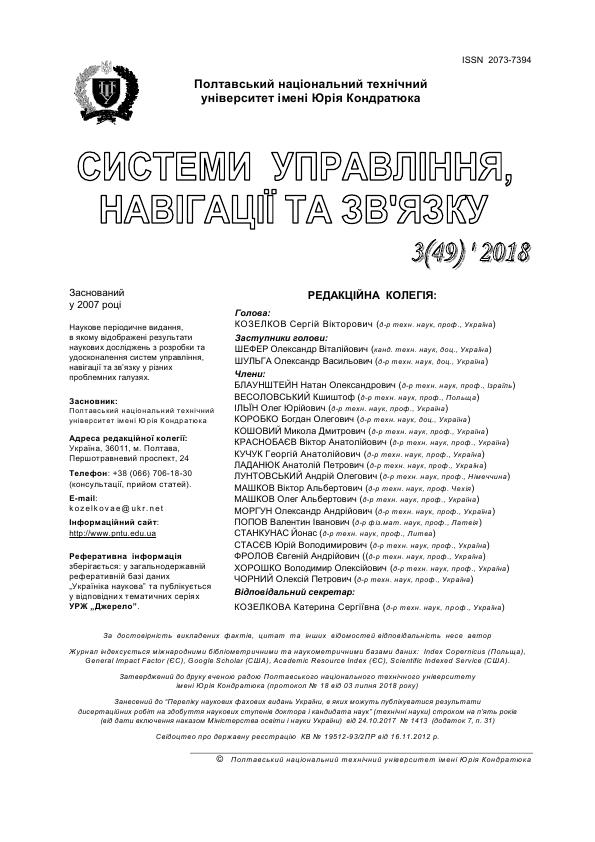CALCULATION OF UNCERTAINTY OF MEASUREMENTS OF X-RAY AND OPTICAL EMISSION ANALYSIS BY OXSAS SOFTWARE ASSISTANCE OF THERMO FISHER SCIENTIFIC CORPORATION
DOI:
https://doi.org/10.26906/SUNZ.2018.3.126Keywords:
uncertainty of measurement, expanded uncertainty, uncertainty of XRF analysis, uncertainty of Spark Optical Emission analysis, uncertainty of calibration, confidence interval, traceability of measurementsAbstract
The method for calculating of measurement uncertainty in determining the concentrations of chemical elements in samples methods of X-Ray fluorescence and Spark Optical-Emission analysis in automatic mode with using the software OXSAS of the Thermo Fisher Scientific corporation was fully presented. Since X-ray fluorescence and optical-emission methods of analysis chemical composition of substances are indirect measurement methods that use the polynomial dependence between the directly measurable parameter (intensities, given by instruments’ detectors) and the one, that is expressed as a result (concentration of chemical elements in percents), the calculation is based on the calculation of the confidence interval of the correlation curve of the certified concentration and the ones, that are obtained by calculation via a calibration curve. Calculation of the uncertainty based on the calibration correlation curve has the great advantage, essence of which is that the calculation procedure is independent of the selected mathematical model for recalculating the measured radiation intensities in the concentration of chemical elements. This is achieved due to the fact that the correlation curve having the value of the standard estimation error (SEE) identical to SEE of the calibration curve and after all gives us information as far as the calculated values coincide with the certified values of the concentrations of the calibration standards. The contribution of random effects to the overall uncertainty budget is estimated by type A, i.e. on the basis of statistical data. An estimate of the standard uncertainty introduced by random effects in the OXSAS software is represented by the Standard Deviation of the mean (SD) value. The uncertainty of the calibration expressed through the confidence interval and the uncertainty due to the random effects expressed through the standard deviation of the mean are not correlated values. Therefore, the total standard uncertainty is determined according to GUM as the square root of the sum of squares. For calculation of expanded uncertainty, OXSAS software uses a coverage factor of two, which provides a confidence level of 95%.Downloads
References
Menditto, A., Patriarca, M. and Magnusson, B. (2007), “Understanding the meaning of accuracy, trueness and precision”, Accreditation and Quality Assurance, pp. 45-47, DOI: 10.1007/s00769-006-0191-z.
Magnusson, B. and Örnemark, U. (2014), Eurachem Guide: The Fitness for Purpose of Analytical Methods – A Laboratory Guide to Method Validation and Related Topics, ISBN 978-91-87461-59-0, 62 p., available at: https://www.eurachem.org/images/stories/Guides/pdf/MV_guide_2nd_ed_EN.pdf.
ISO/IEC 17025:2005 General requirements for the competence of testing and calibration laboratories, ISO Geneva, available at: https://www.iso.org/standard/39883.html.
ISO 9001:2008 Quality management systems – Requirements, ISO Geneva, available at: https://www.iso.org/standard/46486.html.
ASTM E1601-12 Standard practice for conducting an inter laboratory study to evaluate the performance of an analytical method, 2012, available at: www.astm.org.
JCGM 100:2008 Evaluation of measurement data — Guide to the expression of uncertainty in measurement (GUM) (2008), 120 p., available at: https://www.bipm.org/utils/common/documents/jcgm/JCGM_100_2008_E.pdf.
EURACHEM / CITAC Guide CG 4 Quantifying Uncertainty in Analytical Measurement. Second Edition (2012), 133 p., available at: http://www.citac.cc/QUAM2012_P1.pdf.
Dietrich C. /91991), Uncertainty, calibration and probability, second edition, Adam-Hilger, Bristol, U.K., chapter 7.
Magnusson, B., Näykki, T., Hovind, H. and Krysell M. (2012), Handbook for calculation of measurement uncertainty in environmental laboratories, Nordtest Report TR, 537 p.
ISO/TS 28037:2010, Determination and use of straight-line calibration functions. ISO, Geneva (2010), available at: https://www.iso.org/standard/44473.html.
Box, G.E.P., Hunter, W.G. and Hunter, J.S. (1978), Statistics for experimenters, New York, 664 p.
Kragten, J. (1994), “Calculating standard deviations and confidence intervals with a universally applicable spreadsheet technique”, Analyst, pp. 2161-2166.
ISO 21748:2010. Guide to the use of repeatability, reproducibility and trueness estimates in measurement uncertainty estimation. ISO, Geneva (2010), available at: https://www.iso.org/standard/46373.html.




